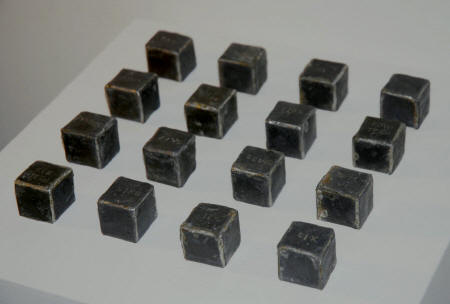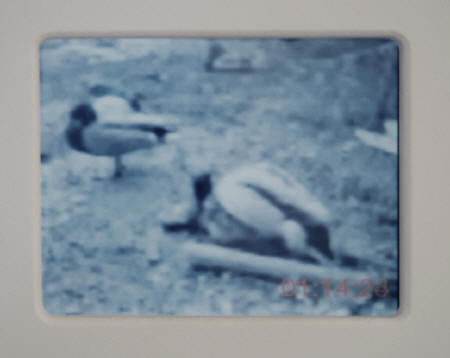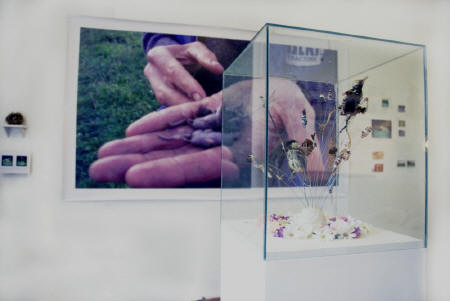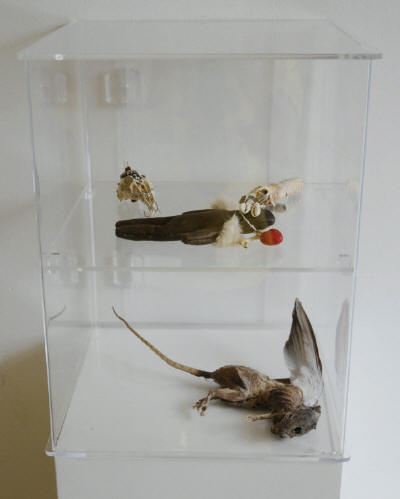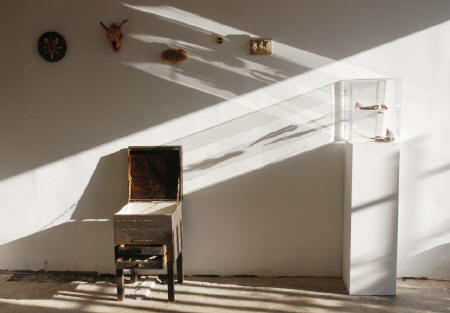|
|
| home | features | exhibitions | interviews | profiles | webprojects | gazetteer | links | archive | forum |
|
Nature Morte Robin Mackay
In the context of the work shown here this disparity also emphasises the fact that all artistic discourses on nature invariably circumscribe it within culturally-coded parameters. Paul Chaney’s work thematises and disrupts this ‘framing’ of nature in several ways, some subtle, some more confrontational. Firstly, against a morass of work that claims blithely to be ‘rooted in the landscape’, or hopes to address the ‘ecological’ from within an uninterrogated romanticism, he does not shrink from the less ‘presentable’ details of natural life and death. To become close to nature, for Chaney, is at the very least to repudiate the notion that the natural world is something from which we can expect some profound and comforting meaning, something unreservedly worthy of our admiration. How to maintain a pious ‘respect’ for a nature which in general demands unremitting senseless death, and whose finer details include necrophiliac duck gangbangs?
Implicitly subtending any
programme of empathy with the denizens of nature is a fantasy of
individualisation. As well as informing Chaney’s animal rites, this
realisation also seems to explain the artist’s experiments with
anthropomorphism, the individualisation and facialisation of the
nonhuman – making ‘units’ of the anonymous masses, giving the forgotten
marked graves, encasing the innumerable in numbered sarcophagi. But of
course,
Ultimately, every demonstrative framing of nature is a helpless repetition of the primordial disconnection of the human from its realm, which is nothing other than the human ability to conceive of nature. Whereas the immanence of nature is incapable of cruelty since unconscious, it is the determinations of thought that, seeking to make sense of its innocent holocaust, concoct the fantasies that inevitably generate cruelty and the accompanying neuroses. In insisting on Nature ‘meaning’ something, we reveal it as a monstrous absurdity insurmountable in principle. No matter how many bees you bury, someone will always get left out.
All this constitutes the
ironic edge to Chaney’s professed monism, reflecting the constitutive
‘cognitive dissonance’ that makes possible – Copernicus, Galileo and
Darwin notwithstanding – our continued conceit of being the unmoving
centre of the universe, this in turn enabling us to paint the grand
panorama of ‘nature’ gushing around us in all its beauty. At the cutting
edge of his practice, Chaney battles with unaestheticised nature as few
of us do. It is because of rather than despite this that his work
challenges the credo according to which just a little love and goodwill
(a few more landscape paintings, perhaps?) could enable humans to temper
their depradations in favour of a more gentle and wholesome stewardship
of nature. For his dramatisation and documentation of ‘non-human
endeavour’ and his commemorations of non-human death suggest a darker
ecology shorn of neo-romantic sentiment. They force a return from
bucolic fantasy to the question of living within a universe, and on a
planet, whose natural order holds no special place for us or for our
endless semantic reframing of nature. To collage dead animal body
parts, however, remains a morbid blasphemy against the secular gods of
taste, decency, and aesthetic purpose, arousing a real discomfort and
thus testifying to the latent power of dead nature. The ambivalent
response the work engenders indicates that, in this respect, our view of
nature is even more antiseptic and ‘tasteful’ than those traditional
still life paintings in which, if dead animals were depicted, it was
usually as meat or game – not dead nature, but the stuff of life and
culture. Returning to older and darker arts, the meticulous assemblage
and decoration of Bradbury’s shamanistic anomalies refuses to
dissimulate their reality. But to encounter death in the realm of the
object like this only makes more poignant our contemporary inability to
process this reality. Against its mere repression, Bradbury’s work seems
to be meditating on the (im)possibility of a cultural remobilisation of
the horror of dead nature. Images top to bottom Paul Chaney: Falmouth Bee Report (2005-detail), Duck Fuck (2005), Delayed Entropy (2007-foreground) Sam Bradbury: Museum Objects (2007-8), Urbanomic installation view
Essay written for the exhibition of the same name at 'Urbanomic', the Old Lemonade Factory, Falmouth www.urbanomic.com
|
|
|

